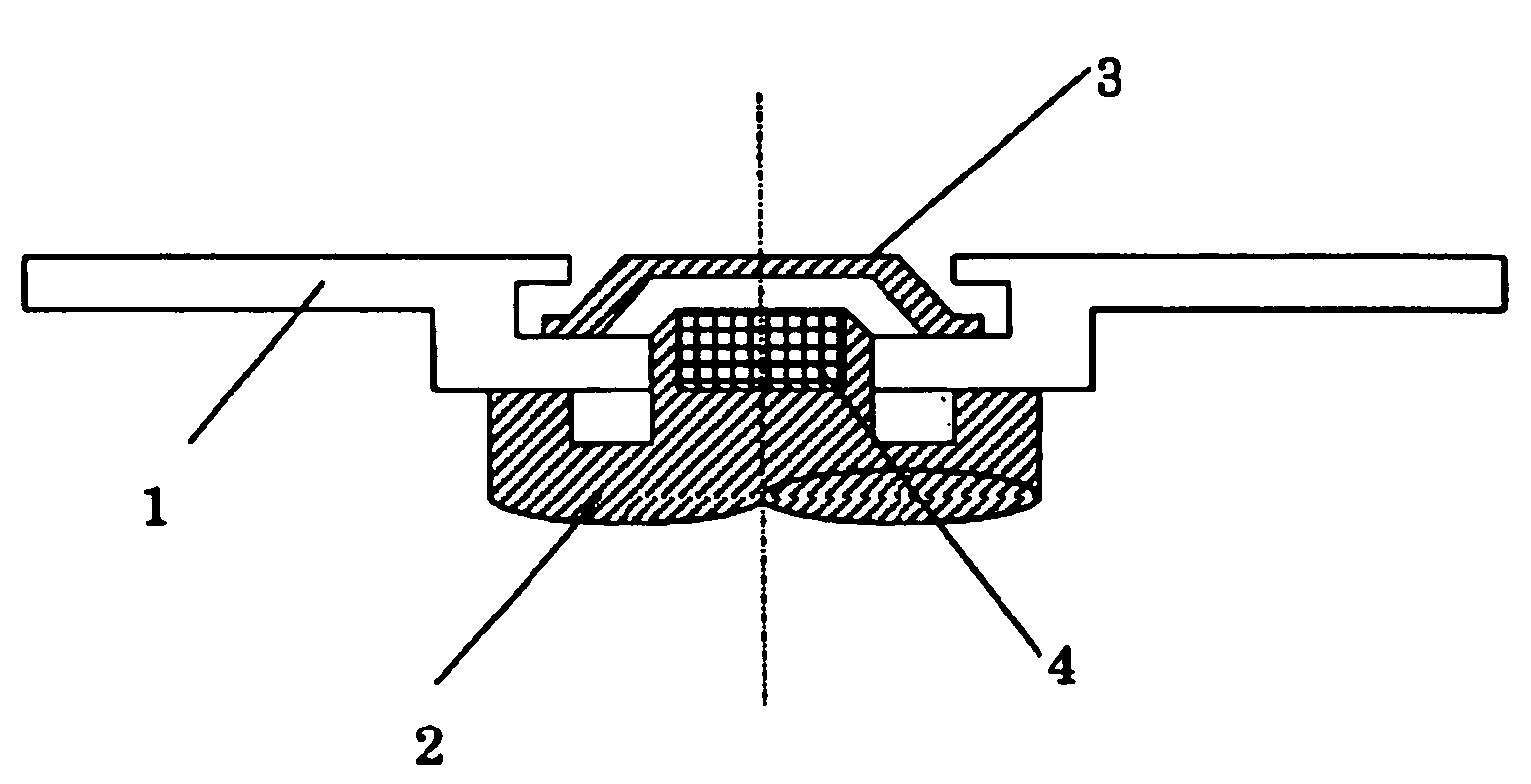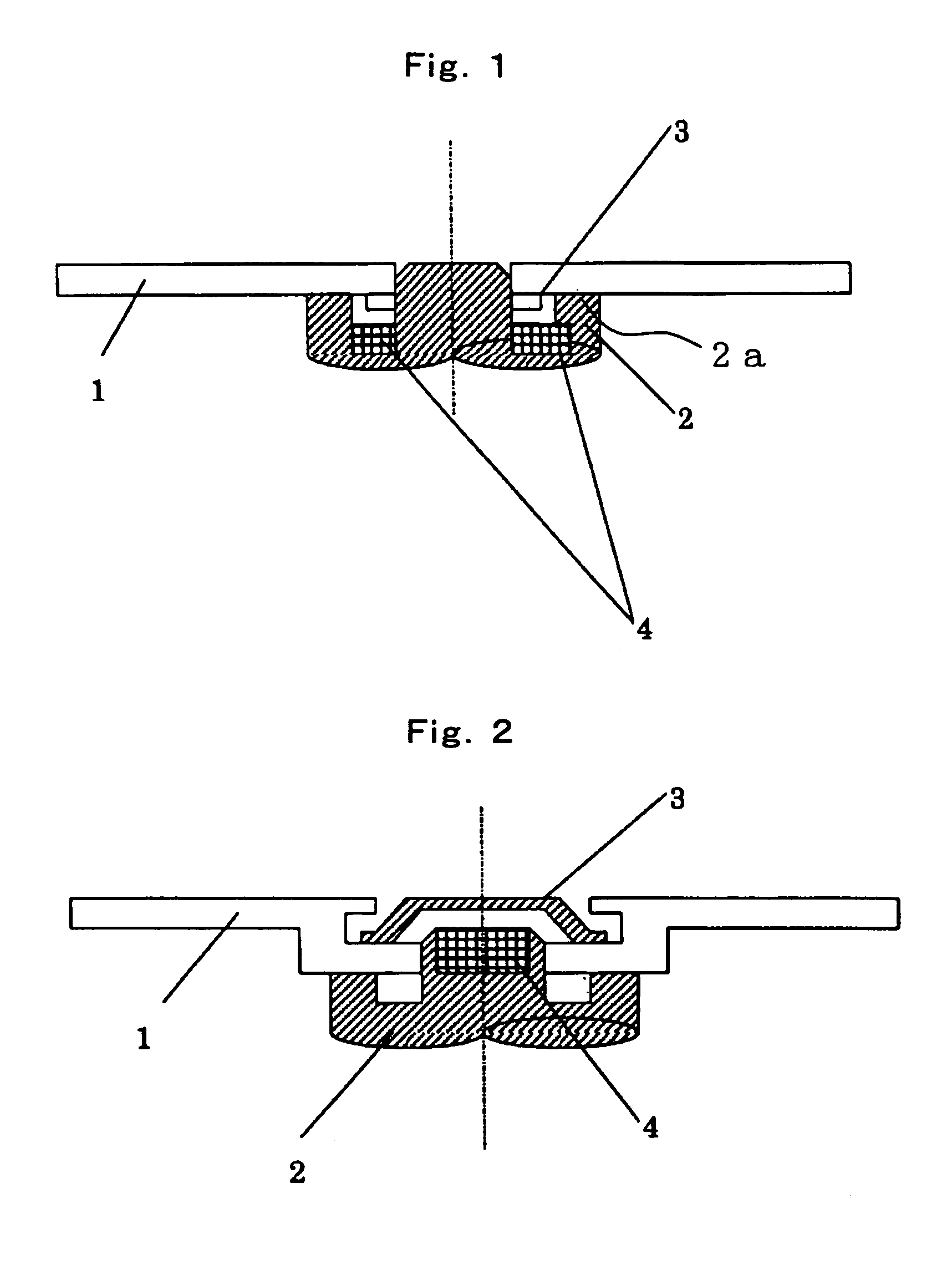Optical disk, disk substrate, and drive
a technology of optical disks and substrates, applied in the direction of instruments, light beam reproducing, flat record carrier containers, etc., can solve the problems of deformation stress, small apparatus, deformation of recording and reproducing characteristics, etc., to improve the rigidity of the whole substrate, increase the frictional force, and speed up the effect of speed
- Summary
- Abstract
- Description
- Claims
- Application Information
AI Technical Summary
Benefits of technology
Problems solved by technology
Method used
Image
Examples
working example 1
[0125]A magneto-optical disk was produced which was similar in laminated structure to the disk 100 shown in FIG. 6. The disk 100 is a magneto-optical disk on the CAD system. The disk 100 is produced by the vacuum-spattering method, which includes the steps of forming on a transparent substrate 11 a first dielectric layer 12, a reproducing layer 13, an auxiliary magnetic layer 14, a second dielectric layer 15, a recording layer 16, a magnetic capping layer 17, a third dielectric layer 18 and a radiating layer 19 in order, and spin-coating a protective layer 20 on the top. The method for producing the disk 100 will be explained below in detail.
[0126]A substrate 11 was formed out of polycarbonate resin, which was injected and filled by the injection molding method. The substrate 11 was shaped as shown in FIG. 4A. In FIG. 4A, which is a cross section, as stated earlier on, the positions of the inner region 5a and outer region 6a and the difference in thickness between each of these regi...
working example 2
[0147]A magneto-optical disk was produced like Working Example 1 except that the contact area Y between the substrate and the magnetic clamping hub was changed to 2.30 cm2 (Y / X=0.020). The magneto-optical disk was housed in the same cartridge as was used for Working Example 1. The cartridge was then set in the recording and reproducing apparatus 71. The magneto-optical disk was then rotated at speeds between 0 rpm and 7,200 rpm. The rotational stability of the rotating disk and the occurrence of tracking errors and read errors were examined. The results of the examination are shown above in Table 1. As evident from the table, this magneto-optical disk was able to maintain stable rotational speeds within the whole range of rotation. No tracking error and no write / read error occurred. The magneto-optical disk is very suitable as a magneto-optical disk that can rotate within a range of rotation at high speed.
first embodiment
[0150]FIG. 19 schematically shows an optical record disk 190 including a substrate according to the third aspect of the invention and a mechanism for rotating the disk. The optical record disk 190 has a recording surface 191b in a predetermined region of an upper surface 191a of the substrate 191. The recording surface 191b can be irradiated with recording light or reproducing light so that information can be recorded or reproduced, respectively. The recording light or the reproducing light is incident on the underside of the optical record disk 190 in FIG. 19. The substrate 191 consists of a magnetic hub 192, a cylindrical hub holder 193 and a main body 194. The hub 192 is made of SUS material and put movably in the holder 193. The main body 194 extends radially outward from the top of the peripheral wall of the holder 193.
[0151]The substrate 191 takes the form of a disk, which has a diameter of 50 mm, and can be produced by injection molding. In FIG. 19, θ represents the angle of ...
PUM
 Login to View More
Login to View More Abstract
Description
Claims
Application Information
 Login to View More
Login to View More - R&D
- Intellectual Property
- Life Sciences
- Materials
- Tech Scout
- Unparalleled Data Quality
- Higher Quality Content
- 60% Fewer Hallucinations
Browse by: Latest US Patents, China's latest patents, Technical Efficacy Thesaurus, Application Domain, Technology Topic, Popular Technical Reports.
© 2025 PatSnap. All rights reserved.Legal|Privacy policy|Modern Slavery Act Transparency Statement|Sitemap|About US| Contact US: help@patsnap.com



